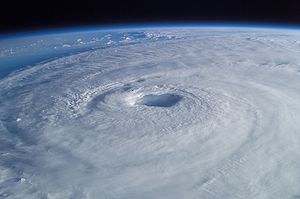Why did India skip Cyclones in October, 2020? How is it related to Madden Julian Oscillation?
The East and West Coasts of India are prone to cyclones with maximum hazards such as winds, storm surge and heavy winds. However, this October 2020 missed such events during this monsoon.
Key Highlights
Around 80 cyclones are formed around the world every year. Out of these, five are formed in Arabian Sea or Bay of Bengal. They are together known as the North Indian Ocean.
Cyclones in North Indian Ocean
The cyclones in North Indian Ocean are bi-modal in nature. This means that they occur during two seasons, that is, in April-June and October-December.
When did India skip Cyclones earlier?
So far, between 1891 and 2020, no cyclone seasons have occurred on 42 occasions. A high wind shear has been noted between different atmospheric levels in October 2020. This prevented the depression and the low pressure system from strengthening into a cyclone.
Why no cyclone developments in October 2020?
According to the Indian Meteorological Department, weak La Nina is the main reason for no cyclone in October 2020.
What is the Forecast for November?
According to IMD, there are no immediate weather systems likely to form cyclones in the seas. Also, the cyclone supporting factor called the “Madden Julian Oscillation” has moved eastwards. Therefore, there are zero influences to kindle the formation of cyclones.
Madden Julian Oscillation
It is an eastward moving cyclic weather along the tropics. It influences rainfall, sea surface temperature, winds.
Phases of Madden Julian Oscillation
It consists of two phases. Enhanced Rainfall Phase and Suppressed Rainfall Phase. In enhanced rainfall phase, winds at the surface of the earth converge to push the air upwards throughout the atmosphere. This rising air increases condensation and rainfall.
Suppressed Rainfall Phase
The winds at the top of the atmosphere converge and forces the air to sink down. As air sinks, it dries and suppresses rainfall.
How does Madden Julian Oscillation affect the Indian Monsoon?
The El Nino, Indian Ocean Dipole and Madden Julian Oscillation are the atmospheric and oceanic phenomena that affect the weather on a large scale. The Indian Ocean Dipole pertains only to the Indian Ocean. However, the other two affects weather till mid latitudes.
When the Madden Julian Oscillation is over the Indian Ocean, it brings good rainfall for the Indian subcontinent. On the other hand, when it stays longer over the Pacific, it dries up Indian Monsoon winds.
Month: Current Affairs - November, 2020


